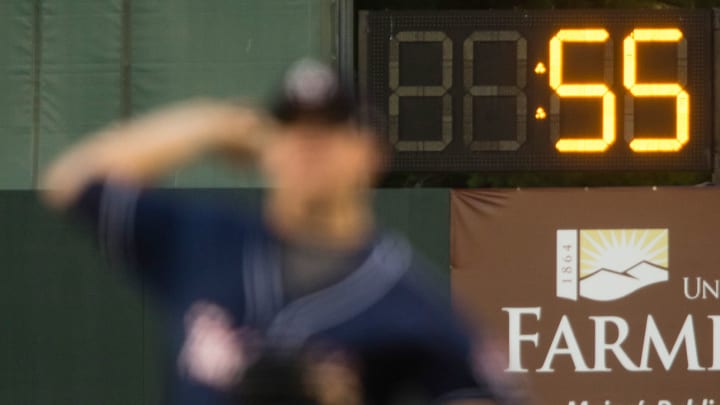MLB May Have an In-Game Pitch Clock As Soon As Next Season

The advent of the pitch clock in Major League Baseball may be upon us. That's according to The Athletic's Ken Rosenthal, who notes that Commissioner Rob Manfred is determined to get the clock into games, perhaps by as early as next season—and that, as opposed to last winter, he may finally have the support of the players. In a meeting held in early August in Washington, D.C. between representatives of the commissioner's office, the players' union and players from the Nationals and Marlins, Manfred reportedly came away feeling positive that a pitch clock could be ticking away during a game by 2018.
The pitch clock has been a big part of Manfred's persistent attempts to address the game's pace of play issues. On average, a game in 2017 lasts three hours and five minutes—the slowest on record, and a five-minute jump from last year's mark. Pitch clocks are now a part of the game in the minor leagues, but introducing them to the majors has been met with resistance by the players and the MLB Players Association. Back in February, Manfred ripped the union for refusing to accept rule changes designed to speed up the game and suggested that he could unilaterally create new rules if he felt like it. But as Rosenthal reports, the August meeting in D.C. was a "very positive" exchange between all sides.
"I appreciate their willingness to continue to have a dialogue with us, instead of ramming things down our throats they know we don’t want," said Marlins reliever Brad Ziegler, who was in attendance.
There's no set plan as of right now with regards to pitch clock implementation, as neither Manfred nor the MLBPA have proposed any concrete solutions. But some kind of agreement could be come to this winter—a rule change like this one does not have to be negotiated through a collective bargaining agreement—and put in place during spring training ahead of the season. Rosenthal reports that a "multi-year rollout" is also a possibility.
While there may be small myriad details to be worked out—the players at the August meeting wanted to know, for example, if the clock had to be 20 seconds between pitches, or if it could be turned off with runners on base—it's clear that pitch clocks are an inevitability, either through a deal struck between Manfred and the union, or through a rule implemented by Manfred on his own. And the clock likely won't be the end of it, either, as Manfred also reportedly wants to establish limits on mound visits by catchers and coaches and shorten the amount of time between innings.
